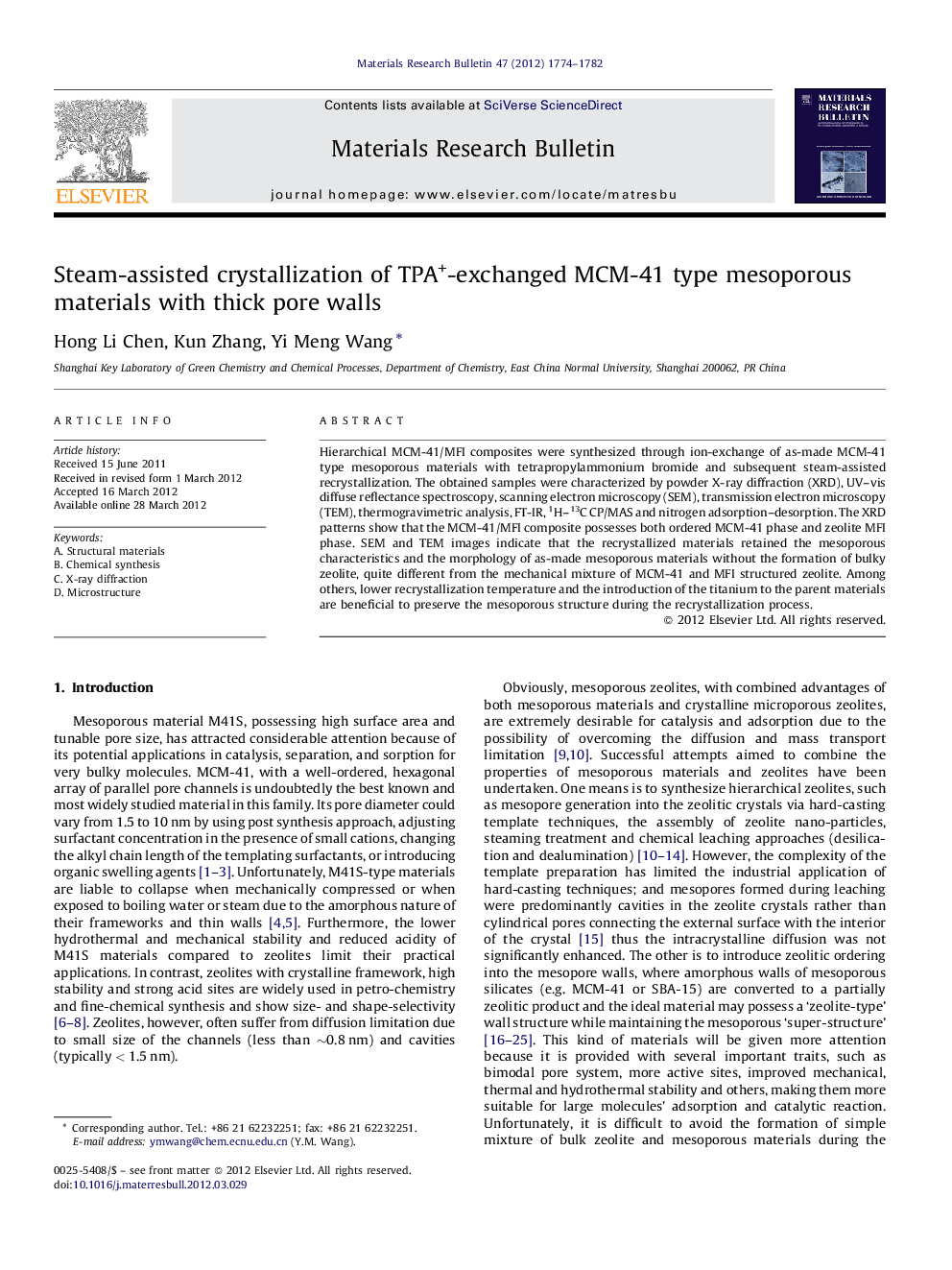| Article ID | Journal | Published Year | Pages | File Type |
|---|---|---|---|---|
| 1490194 | Materials Research Bulletin | 2012 | 9 Pages |
Hierarchical MCM-41/MFI composites were synthesized through ion-exchange of as-made MCM-41 type mesoporous materials with tetrapropylammonium bromide and subsequent steam-assisted recrystallization. The obtained samples were characterized by powder X-ray diffraction (XRD), UV–vis diffuse reflectance spectroscopy, scanning electron microscopy (SEM), transmission electron microscopy (TEM), thermogravimetric analysis, FT-IR, 1H–13C CP/MAS and nitrogen adsorption–desorption. The XRD patterns show that the MCM-41/MFI composite possesses both ordered MCM-41 phase and zeolite MFI phase. SEM and TEM images indicate that the recrystallized materials retained the mesoporous characteristics and the morphology of as-made mesoporous materials without the formation of bulky zeolite, quite different from the mechanical mixture of MCM-41 and MFI structured zeolite. Among others, lower recrystallization temperature and the introduction of the titanium to the parent materials are beneficial to preserve the mesoporous structure during the recrystallization process.
Graphical abstractFigure optionsDownload full-size imageDownload as PowerPoint slideHighlights► Mesoporous Ti-containing silica with thicker pore walls was synthesized. ► Ion-exchange and steam-assisted crystallization led to MCM-41/MFI composite. ► The introduction of Ti inhibited the formation of separated MFI particles. ► Lower temperature favored retaining mesoporous characteristics and morphology.
